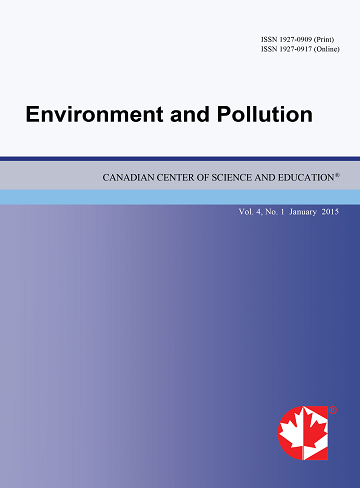Contamination and Potential Ecological Risk Factors of Potentially Toxic Elements Present in the Soil of Shooting Range: Comparison with the Global Soils
- Saba Shoukat
- Shahla Nazneen
- Sardar Khan
- Urooj Zafar
Abstract
This study was carried out to determine potentially toxic element (PTE) contamination and their potential ecological risk factors in shooting range soil. For this purpose soil samples were collected from different locations (left side, right side, shooting point, middle, and stop-butt) from the shooting range of Frontier Corps Training Centre (FCTC) present in Warsak, Peshawar. The soil samples were analyzed for pH, electrical conductivity (EC) and potentially toxic elements including Cd, Cr, Ni, Pb, and Zn. The strong acids digested extracts were analyzed using atomic absorption spectrophotometry to determine the concentrations of selected PTEs. The concentration of Pb was found to be maximum at stop-butt i.e. 2049 mg/kg and exceeded the United States Environmental Protection Agency (US-EPA) critical value of 400 mg/kg, while its concentrations at left, right, shooting point and middle were 14.0 mg/kg, 18.8 mg/kg, 47.4 mg/kg, and 18.2 mg/kg, respectively and exceeded the background level of normal soils which is 10 mg/kg for Pb. This study revealed that the shooting range soil was highly contaminated with Pb, and very high contamination factor and potential ecological risk for Pb was observed at stop-butt, very high contamination factor and potential ecological risk for Cd, while moderate contamination factor for Zn was observed at all locations of the shooting range. In Pakistan, the environmental perspective of shooting range soils is overlooked and there is a need to take steps to avoid such contamination of soils with Pb and other PTEs that can enter into food chains and can also leach to contaminate the aquifer. Replacement of vegetation of shooting range with PTE tolerant species, addition of soil conditioners and uncontaminated soil would reduce the mobility of these contaminants into aerial portions of plants and protect the groundwater contamination.
- Full Text:
 PDF
PDF
- DOI:10.5539/ep.v9n1p37
Journal Metrics
Index
- Academic Journals Database
- Berkeley Library
- CAB Abstracts
- CAS (American Chemical Society)
- CNKI Scholar
- COPAC
- CrossRef
- DTU Library
- Elektronische Zeitschriftenbibliothek (EZB)
- EuroPub Database
- Excellence in Research for Australia (ERA)
- Genamics JournalSeek
- Google Scholar
- Harvard Library
- Infotrieve
- Jisc Library Hub Discover
- JournalGuide
- JournalTOCs
- LOCKSS
- Max Planck Institutes
- Mir@bel
- PKP Open Archives Harvester
- Pollution Abstracts
- Publons
- Pubmed journal list
- ROAD
- Scilit
- SHERPA/RoMEO
- Standard Periodical Directory
- Stanford Libraries
- UCR Library
- Ulrich's
- UniCat
- Universe Digital Library
- UoS Library
- WorldCat
- Zeitschriften Daten Bank (ZDB)
Contact
- Albert JohnEditorial Assistant
- ep@ccsenet.org
